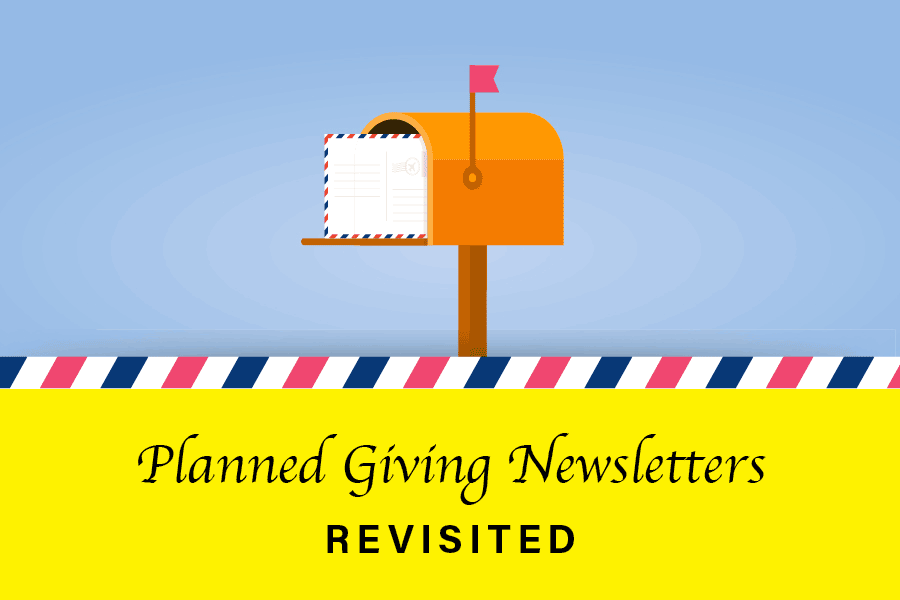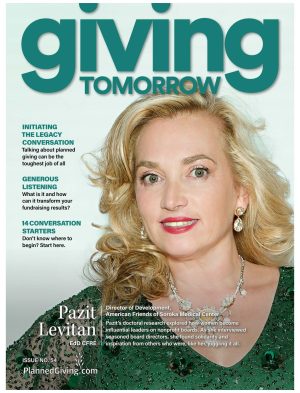Do Planned Giving Newsletters Work?
I am asked this question often. It’s a question that stems from a tactical mindset, and it’s repeated so often because fundraisers are told newsletters are a cost of entry since “we’ve always done it that way.” It’s a tired excuse — and, according to the late, groundbreaking programmer Grace Hopper, one of the most dangerous phrases in the English language.
And while tactics are important, they are a commodity — something that can be had anywhere. We’re a strategic, research-based marketing firm; in it for the long haul. So never mind how the others have “always done it” — let’s back up and ask the right question: “Is the return on investment (ROI) worth it for me?”
Well, yes … and no. Although most fundraising shops like my clients consider newsletters Mesozoic, you should first understand what it takes to produce a successful newsletter with its own solid readership:
Marketing 101: Consistency and Delivery
- The long haul.
At first, your newsletter, no matter how great, will not serve you. It will need to catch on over time. Be ready to commit — this is critical, to say the least. It took our monthly newsletter Giving Tomorrow™ at least 3 years to achieve a decent reader base. - Frequency.
This is not just my opinion; it’s the opinion of industry marketing experts. Quarterly or twice a year won’t cut it, because it will take three to four times as long to catch on, if it ever does. Once a year? Don’t even bother. One-shot deals seldom work. - It needs a brand.
This is first done by establishing a “look” and then being consistent from one issue to the next, with frequency (see #1 above). I see so many development shops outsource to a “newsletter company,” then take it in-house, then use another vendor, then hire a freelancer … you get the drift. And they expect to establish a brand? - You can’t skip issues.
This sets you right back to square one. - A good list.
Are the people receiving your newsletter actually interested in reading it? If you said yes, how do you know? If you assumed “yes” because 3 board members liked it, that’s not considered “research.” Narrow your list and mail only to that small, interested group, and mail often. Even if that group is 1/10th of your pool. You can do this by sending donors a series of communications asking whether they want to “subscribe” to your newsletter or not.
Marketing 102: Content and Mood
- Interesting topics.
Not interesting to you, the fundraiser, but interesting to your donors. That means stories your donors can relate to. This takes effort and requires a focus group, but it’s doable. - Consistency in style.
Specific columns, newsflashes, “departments,” events corner, etc. - An engaging style.
Humor really works (only if appropriate, but I’ve seen even hospices utilize it with understated elegance). - Striking photography.
Well-taken pictures of donors, fundraising events, etc. Make sure your photos are professional — blurry, poorly framed or badly lighted pictures just won’t cut it.
As you can see, creating the right newsletter is a full-time job. Are you ready to fully commit and handle it all? If not, we have a new solution: The Planned Giving Newslet.
The Last Question
Of course, in the end you also have to ask yourself: before you invest energy to produce a marketing product that, eventually, requires the donor’s death, would YOU want to read it?
I didn’t think so. No wonder donor communications expert Tom Ahern calls them “death brochures.”
PS:
I strongly believe “who you associate with defines who you are.” I am a professional planned giving marketing expert who associates with global branding and marketing thought leaders from companies like GlaxoSmithKline, Johnson & Johnson, Heinz, Ketchum, Saatchi & Saatchi, and Proctor & Gamble, and not with those who talk about the Generation Skipping Tax, CRUTs and CRATs.






